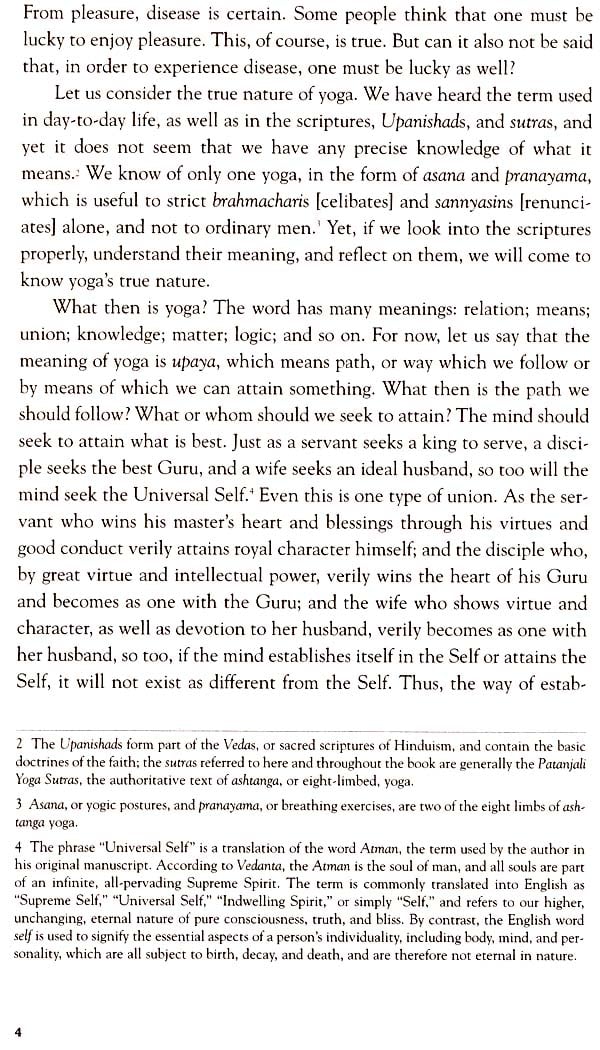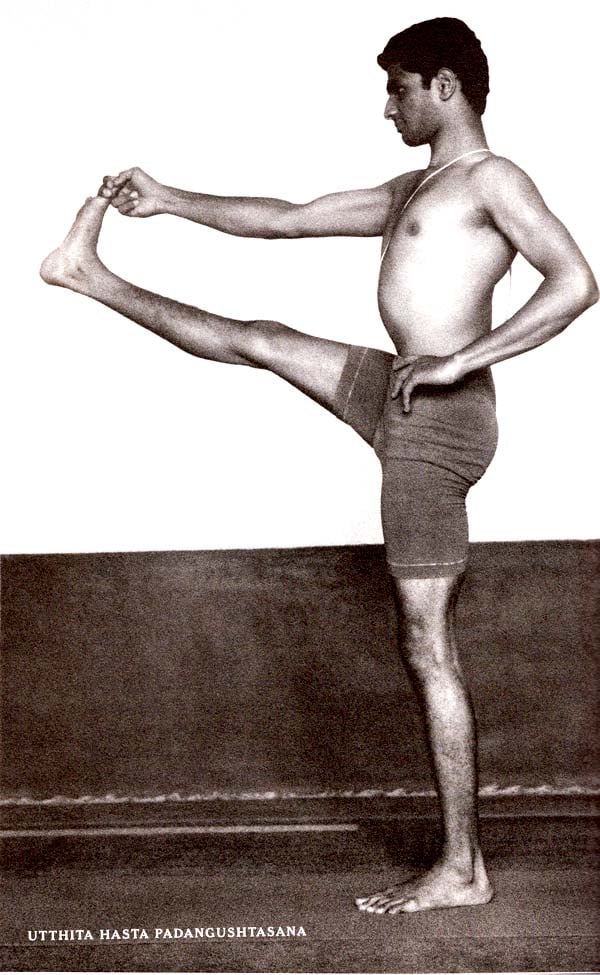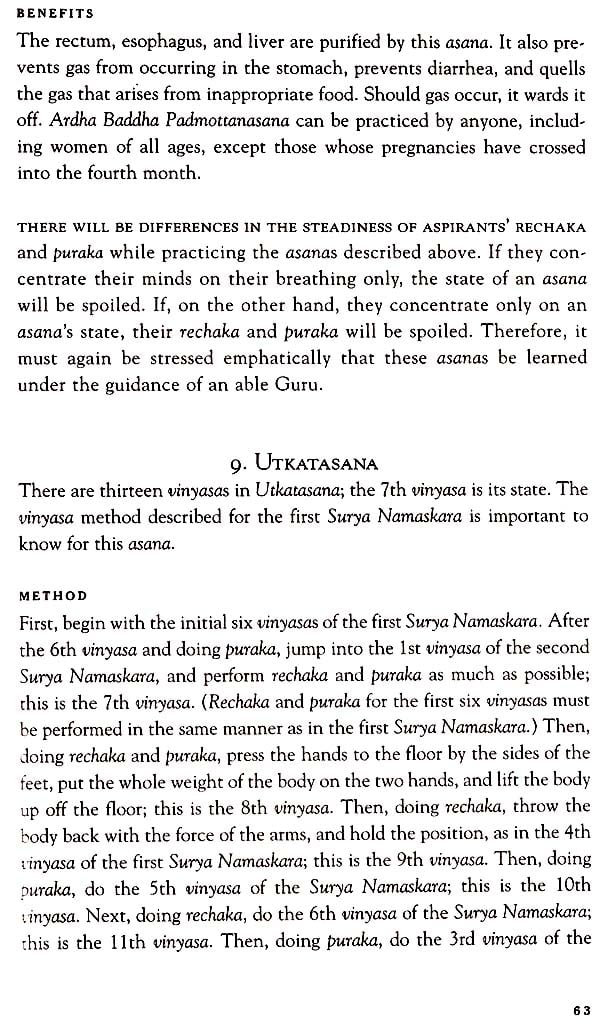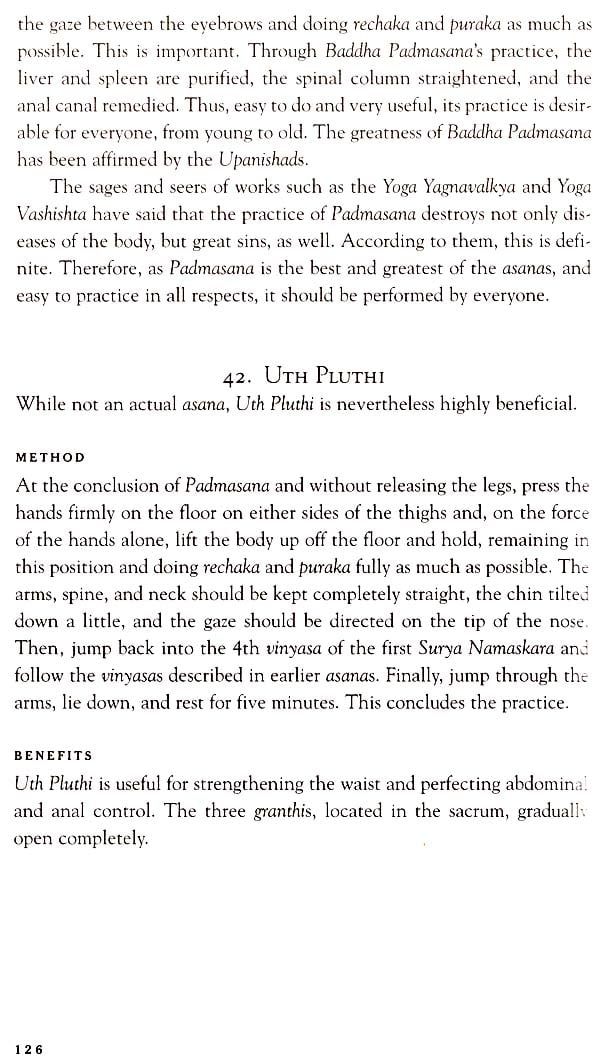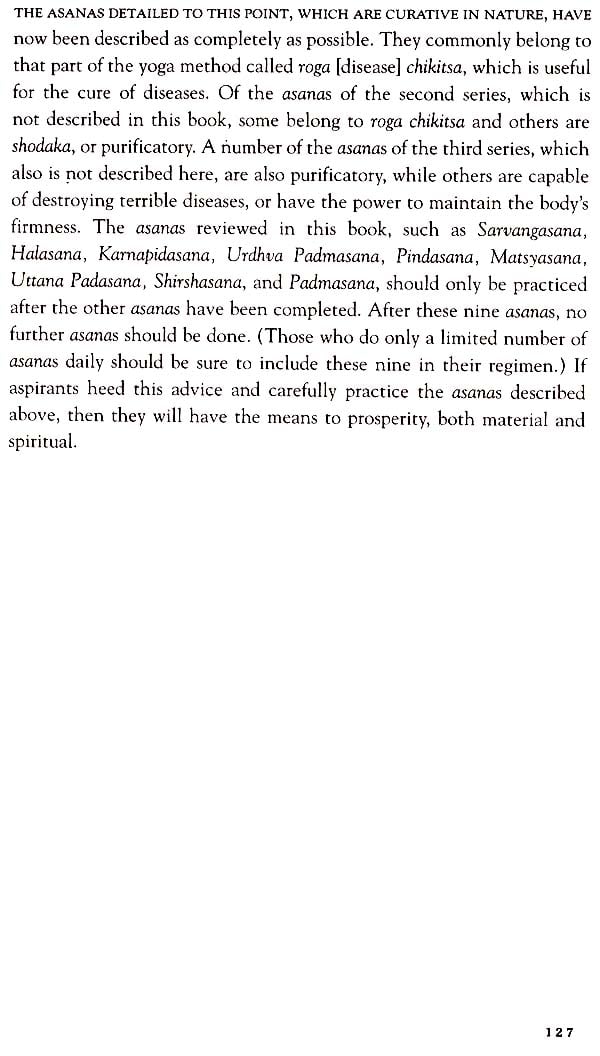
Yoga Mala: The Original Teachings of Ashtanga Yoga Master Sri K. Pattabhi Jois
Book Specification
| Item Code: | NAP559 |
| Author: | R. Sharath Sri K. Pattabhi Jois |
| Publisher: | Macmillan India Ltd |
| Language: | English |
| Edition: | 2018 |
| ISBN: | 9789386215536 |
| Pages: | 150 (Throughout B/W Illustrations) |
| Cover: | Paperback |
| Other Details | 9.0 inch X 6.0 inch |
| Weight | 170 gm |
Book Description
This small book by one of the great yoga fresh of our time attests to the timeless nature of ashtanga yoga practice. Based on vinyasa –the coordination of breath and movement-yoga has become one of the most widespread and influential styles if practice today and Yoga Mala is its most important written guide. this book, Sri K. Pattabhi jois outlines the ethical principles and philosophy underlying ashtanga yoga and explains its terms and concepts.He then guides us through the sun Salutations and the primary series, which consists of forty two asanas. At every step he describes how to execute each pose and what benefits each provides.
Jois introduced ashtanga yoga to the West in 1964 and was the driving force behind its worldwide dissemination. Habing studied for twenty –five years with T.krishnamcharya, he passed on his knowledge to generations of students around the world.
"Mala is a Sanskrit term that means garland. In India, there are many different kinds of malas. There arejapamalas, made up of sacred beads strung on a thread which air used in prayer for counting and keeping focused on the repetition of a mantra. There are pushpamalas, which are garlands of vivid flowers, smelling of jasmine and other scents that are strung in the form of wreaths and offered in worship to deities in homes and temples. Guruji [Jois] here offers another kind of irra, which is ancient tradition, as sacred as a prayer, and as fragrant as flowers. His inala is a garland of yoga, in wind each riirtasa is like a sacred head to he counted and focused on, and each asoua is like a flower strung on the thread of the breath. Just as ajapaiala adorns neck and a pushpamala adorns the gods, so too does this garland of yoga, whet diligently practiced, adorn our entire being with peace, health, radiance, and, ultimately, selfknowledge.
Om sri gururhy namah Pattbahi Jois (Guruji) was a legend in the practice of yoga. I studied with him for twenty years, and was continuously amazed at how great he was in his personal practice. The parampara of Rama Mohan Brahmachari and Sri T. Krishnamacharya carried on with Guruji, who spent decades under the tutelage of Krishnamacharya, poring over yoga texts and, more important, practicing every facet of yoga with the intent of profoundly understanding its philosophical implications. One can only become a yogi and a great guru after having experienced yoga fully, as my grandfather did.
Fully dedicated to yoga from the time he arrived in Mysore at age twelve, Guruji led a disciplined yet simple life. Deeply devoted to his practices, he would rise early each morning to perform chanting and prayers and, when he was younger, his asana practice as well. Above all, he was committed to passing on his knowledge to his students with a pas-sion we all admired, teaching tirelessly at his yoga institute for seventy years. "Yoga is ninety-nine percent practice and one percent theory" is an idea that Guruji repeatedly presented. He meant that we cannot be mechanical in our approach or resort to being only philosophical about yoga; we must engage it practically in our daily life, and gain an under-standing of each of the eight limbs. Beyond asanas, there are the obser-vances of yama and niyama how we conduct ourselves with the world in a kind and aware manner, and how we abide by our own code of norality. By following these observances, one becomes a good yogi.
The book that Guruji used to convey these teachings, Yoga Mala, refers to many authoritative yoga texts to support his teachings: Patanjali's Yoga Sutras, Hatha Yoga Pradipika, many of the Yoga Upanisads, as well the Yoga Korunta, a rare text that to this day has only been spoken of by his guru, Krishnamacharya. It took Guruji three years to write Yoga Mala, after painstaking research in each authoritative text and manu-script to ensure that his information was credible and not based on fancy. The unique aspect of Krishnamacharya's teaching was vinyasa karma, the systematic method of linking breath and movement, and Yoga Mola cov-ers this topic in depth.
Guruji instructed countless thousands of people around the world, and guided many to become teachers as well. The method explained in this book is identical to the method taught at his institute in mysore, the method we follow today. It was his hope that future generations will continue to do same and practice in order to preserve the traditional yogic knowledge.
Guruji created a strong foundation of yoga for us by teaching with such dedication for so many years .It is our duty to build upon that foundation so that , in this modern and confusing age, yoga can be passed on undiluted and ints purest form. Guruji dedicated ninety-three years to teaching, nd from him we should learn, be inspired , and carry on.
Contents
| Foreword by R. Sharath | xiii | |
| Foreword by Eddie Stern | xv | |
| Preface | xxi | |
| Yama | 6 | |
| Niyama | 13 | |
| Pranayama | 18 | |
| Surya Namaskara and Yoga Asanas | 33 | |
| 1 | Padangushtasana | 48 |
| 2 | Padahastasana | 48 |
| 3 | Utthita Trikonasana | 51 |
| 4 | Utthita Parshvakonasana | 53 |
| 5 | Prasarita Padottanasana | |
| (A) | 54 | |
| (B) | 55 | |
| (C) | 55 | |
| (D) | 57 | |
| 6 | Parshvottanasana | 57 |
| 7 | Utthita Hasta Padangushtasana | 59 |
| 8 | Ardha Baddha Padmottanasana | 61 |
| 9 | Utkatasana | 63 |
| 10 | Virabhadrasana | 65 |
| 11 | Paschimattanasana | 68 |
| 12 | Purvatanasana | 71 |
| 13 | Ardha Baddha Padma Paschimattanasana | 72 |
| 14 | Tiriangmukhaikapada Paschimattanasana | 73 |
| 15 | Janu Shirshasana | |
| (A) | 77 | |
| (B) | 79 | |
| (C) | 79 | |
| 16 | Marichyasana | |
| (A) | 83 | |
| (B) | 84 | |
| (C) | 85 | |
| (D) | 85 | |
| 20 | Navasana | 87 |
| 21 | Bhujapidasana | 88 |
| 22 | Kurmasana | 88 |
| 23 | Garbha Pindasana | 91 |
| 24 | Kukkutasana | 93 |
| 25 | Baddha Konasana | 93 |
| 26 | Upavishta Konasana | 95 |
| 27 | Supta Konasana | 96 |
| 28 | Supta Padangushtasana | 99 |
| 29 | Ubhaya Padangushtasana | 101 |
| 30 | Urdhva Mukha Paschimattanasana | 102 |
| 31 | Setu Bandhasana | 103 |
| 32 | Sarvangasana | 104 |
| 33 | Halasana | 106 |
| 34 | Karnapidasana | 106 |
| 35 | Urdhva Padmasana | 108 |
| 36 | Pindasana | 108 |
| 37 | Matsyasana | 113 |
| 38 | Uttana Padasana | 114 |
| 39 | Shirshasana | 116 |
| 40 | Baddha Padmasana | 123 |
| 41 | Padmasana | 125 |
| 42 | Uth Pluthi | 126 |

